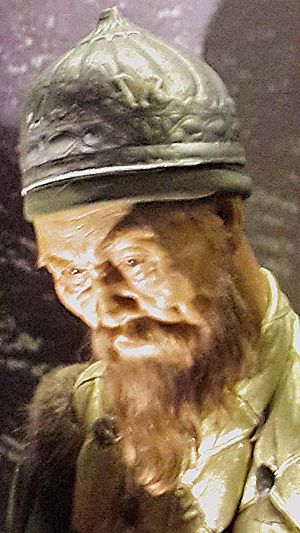Turco-Mongol facts for kids

The Turco-Mongol tradition was a special mix of cultures. It happened when Mongols and Turkic peoples came together. This mix started a long time ago. It created new ways of life and ruling. Many powerful empires in Central Asia followed this tradition. These included the Timurid Empire, the Kazakh Khanate, the Khanate of Kazan, the Nogai Horde, the Crimean Khanate, and the Mughal Empire.
Contents
What is Turco-Mongol Tradition?
This tradition is about how two big groups, the Turkic people and the Mongol people, shared their ways. It's like mixing two different styles to make a new one. This mix happened over many years. It affected how people ruled, fought, and lived. It was a cultural blend.
How the Tradition Started
The Turco-Mongol tradition began when the Mongol Empire expanded. Mongol armies conquered many lands. These lands were often home to Turkic peoples. Over time, the Mongol rulers started to adopt Turkic customs. They learned Turkic languages. They also adopted the religion of Islam. This blending created a new, unique culture.
Important Empires and Rulers
Many famous empires followed this tradition. One of the most well-known was the Timurid Empire. It was founded by Tamerlane. He was a great military leader. Tamerlane was of Mongol descent. But he grew up in a Turkic-speaking area. He combined Mongol military skills with Turkic culture.
Another big empire was the Mughal Empire in India. Its founder, Babur, was also a descendant of Tamerlane. The Mughals brought Turco-Mongol ideas to India. They created a rich culture there. This culture mixed Persian, Indian, and Turco-Mongol elements.
Other important states included:
- The Kazakh Khanate in Central Asia.
- The Khanate of Kazan in Eastern Europe.
- The Nogai Horde near the Black Sea.
- The Crimean Khanate on the Crimean Peninsula.
These states all showed the blend of Turkic and Mongol ways.
Key Features of the Tradition
The Turco-Mongol tradition had several key features:
- Military Skills: Both Mongols and Turkic peoples were excellent horsemen and warriors. Their combined military tactics were very strong.
- Language: Turkic languages became very important. Many Mongol rulers learned and used Turkic languages.
- Religion: Islam became the main religion for most Turco-Mongol rulers. They helped spread Islam in their lands.
- Government: They often used a mix of Mongol laws and Turkic ways of ruling. This created strong, organized empires.
- Art and Culture: This tradition led to beautiful art, architecture, and literature. Many cities became centers of learning.
Related pages
See also
 In Spanish: Turcomongol para niños
In Spanish: Turcomongol para niños

